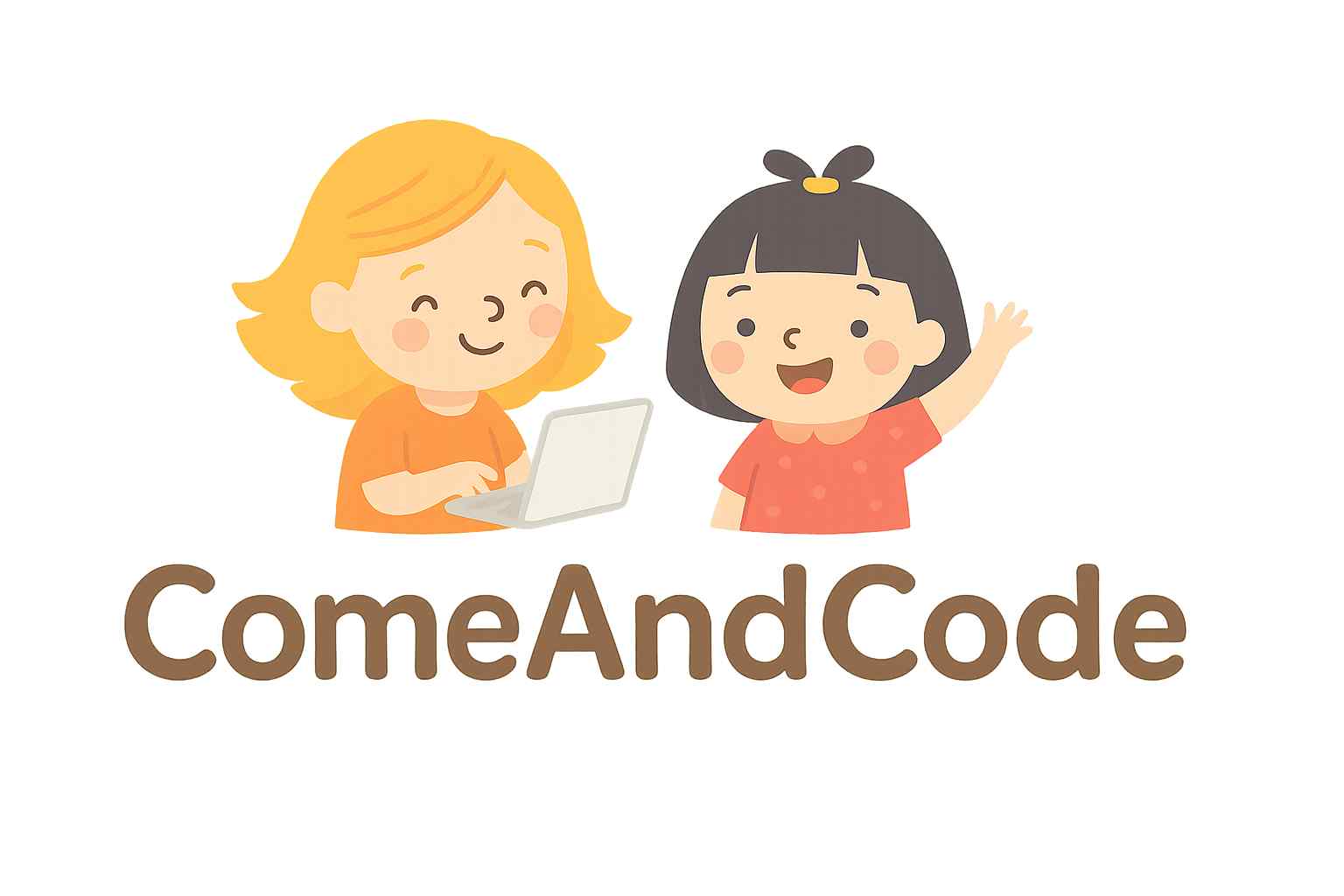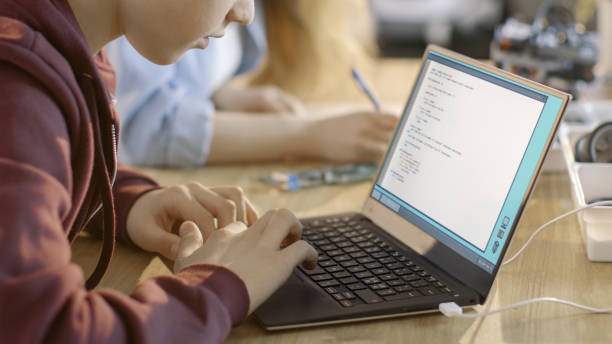Coding for Kids has become an essential skill, much like reading or math. It’s not just about preparing children for potential careers in technology; coding also helps develop logical thinking, problem-solving, and creativity. But the question many parents ask is: how young can kids start learning to code?
The answer might surprise you! Coding is accessible to children as young as preschool age, and with the right tools and approach, learning to code can be both fun and educational. In this article, we’ll explore the ideal age for kids to begin coding, the benefits of learning to code early, and some of the best tools and resources available for young learners.
1. The Ideal Age to Start Learning Coding
A. Preschool Age (Ages 3-5)
Believe it or not, children as young as 3 can begin to grasp basic coding concepts. At this age, they won’t be sitting in front of a computer writing lines of code, but they can start learning the building blocks of coding through interactive games, toys, and activities that teach sequencing, patterns, and problem-solving skills. These early experiences lay the foundation for more formal coding later on.
B. Early Elementary School (Ages 5-7)
By the time children reach kindergarten or first grade, they’re ready for more structured coding experiences. At this age, kids can start using visual programming languages, such as ScratchJr, which allow them to create stories, games, and animations by dragging and dropping blocks of code. This approach eliminates the need for typing and helps them focus on understanding coding logic and structure.
C. Upper Elementary School (Ages 7-10)
As kids progress through elementary school, they can move from block-based programming to more advanced coding languages. By the age of 7 or 8, children can start using languages like Scratch, which introduces more complex coding concepts while still maintaining a user-friendly interface. By the time they’re 9 or 10, they may be ready to try more text-based programming languages like Python or JavaScript.
D. Middle School and Beyond (Ages 11-13 and Up)
By middle school, many kids are capable of learning professional programming languages like Python, Java, or C++. At this stage, they can dive deeper into the complexities of coding and even start building their own apps, websites, or video games. As they continue to develop their skills, they can explore advanced coding concepts like algorithms, data structures, and artificial intelligence.
2. The Benefits of Learning to Code at a Young Age
A. Develops Critical Thinking and Problem-Solving Skills
Coding requires breaking down complex problems into smaller, manageable steps—a process known as decomposition. As children learn to code, they also learn how to approach problems logically, think critically, and devise creative solutions. These problem-solving skills are invaluable in all areas of life, from academics to personal challenges.
B. Enhances Creativity and Innovation
When kids code, they’re not just following instructions—they’re creating. Whether it’s designing a video game, developing a website, or programming a robot, coding allows children to turn their ideas into reality. This creative aspect of coding fosters innovation and encourages kids to experiment, think outside the box, and explore new possibilities.
C. Improves Math and Logical Reasoning
Coding involves a lot of logic, sequencing, and patterns—all of which are closely related to math. As kids work on coding projects, they naturally improve their mathematical thinking and reasoning skills. Coding also teaches concepts like variables, loops, and conditionals, which can help strengthen a child’s understanding of math.
D. Prepares Kids for Future Career Opportunities
The demand for tech skills is growing rapidly, and by learning to code at a young age, kids can gain a significant advantage in the job market. Even if they don’t pursue a career in technology, coding skills are valuable in a wide range of fields, from engineering and science to art and business. Teaching kids to code now sets them up for success in a world that increasingly relies on technology.
E. Boosts Confidence and Perseverance
Coding can be challenging, especially when things don’t work as expected. But these challenges teach children the importance of perseverance and resilience. When kids finally solve a difficult problem or complete a coding project, they experience a sense of accomplishment and pride. This boost in confidence motivates them to keep learning and tackling new challenges.
3. Coding Concepts That Young Kids Can Understand
Even though coding may seem like a complex subject, there are several core coding concepts that young children can grasp, even before they learn how to write code.
A. Sequencing
Sequencing is the basic concept of putting steps in the correct order to complete a task. This is something young children already practice in daily life, whether they’re following a recipe or brushing their teeth. In coding, sequencing is key to writing instructions that a computer can follow.
B. Loops
A loop is a sequence of instructions that repeats until a certain condition is met. Kids can understand loops by thinking about tasks they do repeatedly, like jumping rope or singing the chorus of a song. In coding, loops allow programmers to automate repetitive tasks efficiently.
C. Conditionals
Conditionals are “if-then” statements that allow a program to make decisions based on certain conditions. For example, “If it’s raining, then take an umbrella.” Kids often use conditionals in their everyday lives without even realizing it, and they can apply the same logic to coding.
D. Debugging
Debugging involves finding and fixing errors in code. While debugging may sound technical, young kids can relate to the idea of making mistakes and learning from them. Debugging teaches children that making mistakes is part of the learning process and that persistence is key to overcoming challenges.
4. Top Coding Tools and Resources for Young Learners
There are plenty of tools and resources designed specifically to teach kids how to code in a fun and engaging way. Below are some of the best options for young learners.
A. ScratchJr (Ages 5-7)
ScratchJr is a free app designed for young children to create their own interactive stories, games, and animations. Instead of typing code, kids use blocks to create sequences and control the actions of characters. ScratchJr is perfect for introducing basic coding concepts like sequencing, loops, and events to younger kids.
B. Scratch (Ages 7-10)
Scratch is a more advanced version of ScratchJr and is one of the most popular coding platforms for kids. It allows children to create games, animations, and stories by snapping together blocks of code. Scratch teaches more complex coding concepts like variables and conditionals while keeping the interface simple and user-friendly.
C. Code.org (Ages 5 and Up)
Code.org is a nonprofit organization that provides free coding lessons and activities for kids of all ages. Their interactive courses cover a wide range of topics, from basic coding concepts to game design and app development. Code.org’s Hour of Code tutorials are especially popular in classrooms and after-school programs.
D. Tynker (Ages 7-13)
Tynker offers a variety of interactive coding courses for kids, ranging from beginner to advanced levels. The platform uses block-based coding for younger kids and transitions to text-based coding languages like Python and JavaScript as they advance. Tynker also offers coding games, puzzles, and lessons for creating apps and games.
E. Bee-Bot (Ages 3-5)
Bee-Bot is a programmable robot designed for preschoolers. Using directional buttons, kids can program the Bee-Bot to move forward, backward, or turn. This hands-on approach to coding helps young children tangibly understand sequencing and problem-solving.
F. Lightbot (Ages 5-12)
Lightbot is a puzzle game that teaches kids the basics of programming through fun, interactive challenges. Children must use programming commands to guide a robot through each level, solving puzzles that introduce coding concepts like loops and conditionals.
5. How to Encourage Your Child’s Interest in Coding
If you’re interested in teaching your child to code but aren’t sure where to start, here are some tips for fostering their interest and keeping them motivated.
A. Make Coding Fun and Engaging
The key to getting young kids interested in coding is making it fun. Use games, apps, and hands-on activities that let your child create, explore, and experiment. Many coding tools for kids are designed to feel like play rather than work, which helps keep them engaged.
B. Incorporate Coding into Daily Activities
Coding doesn’t have to happen in front of a computer. You can incorporate coding concepts into everyday activities like cooking (following a recipe is like sequencing) or playing games that involve strategy and problem-solving. This helps kids see how coding relates to the real world.
C. Start Small and Build Gradually
When introducing your child to coding, start with simple activities and gradually increase the complexity as they become more comfortable. It’s important to build confidence early on, so celebrate their achievements and encourage them to keep learning.
D. Join Coding Communities and Events
There are many coding clubs, workshops, and events where kids can learn coding in a collaborative and social environment. Participating in events like Hour of Code or joining a local coding club can help your child connect with other kids who share the same interest.
E. Be Patient and Supportive
Learning to code takes time, especially for young children. Encourage your child to persevere through challenges and remind them that making mistakes is part of the learning process. Celebrate their successes and provide support when they encounter difficulties.
Conclusion
There is no “perfect” age to start learning to code—children as young as three can begin exploring coding concepts, and there are resources available for learners of all ages. Coding teaches invaluable skills like problem-solving, creativity, logical thinking, and perseverance, making it an essential skill for the future. With the right tools, support, and encouragement, kids can embark on a fun and educational coding journey that will benefit them for years to come.


